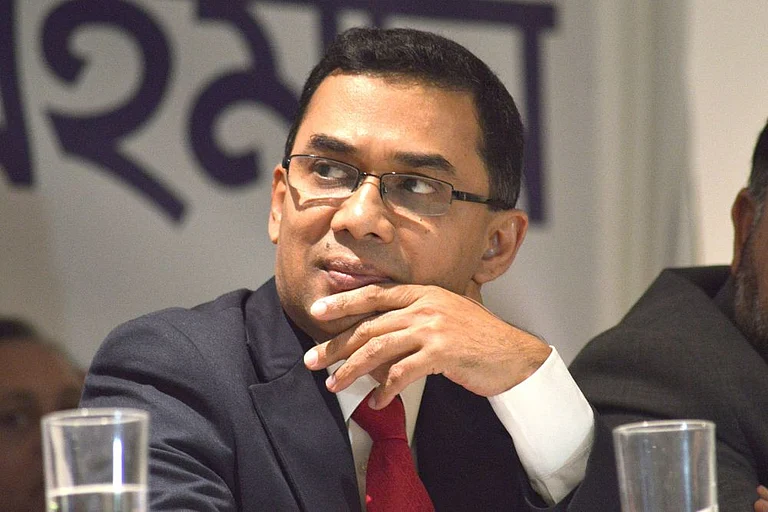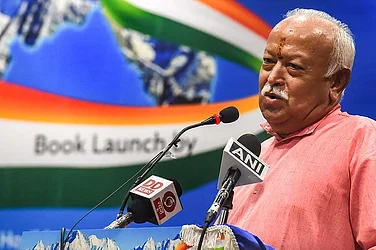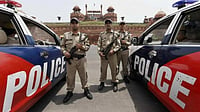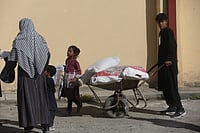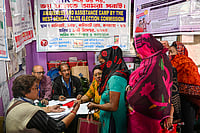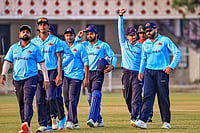- They allege the Darjeeling Hills region, dominated by Gorkhas, has been neglected by the state government.
- The Hills Council set up 20 years ago under Subhas Ghising has failed to deliver.
- The Hills region is cash rich. But it's not getting its due vis-a-vis development.
- Gorkha leaders say the promise of accelerated growth by the West Bengal CM is too little and too late.
- They want the centre to intervene, hold tripartite talks with the state government and Gorkha leaders.
***
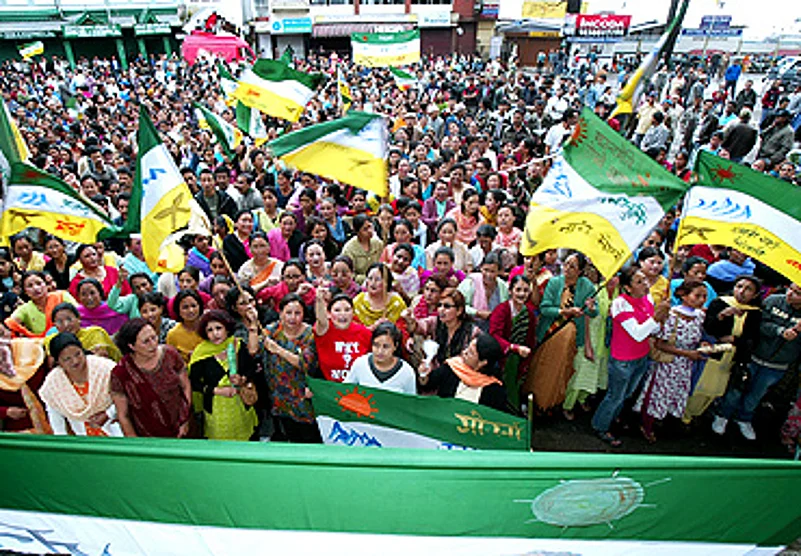
The hills are alive: GJM supporters at a June 17 rally in Darjeeling
The distrust deepened after the state government backed Ghising's bid to bring the hills under the Sixth Schedule of the Constitution—applicable only to the country's tribal areas. Barely 20 per cent of the Gorkhas—the Limbus and Tamangs (Ghising's community)—are tribals, and the non-tribals were suspicious of Ghising's bid, which they viewed as an attempt to divide the Gorkhas.
Morcha leaders also justify the Gorkhaland demand on financial grounds. GJM leader Harka Bahadur Chettri says the proposed Gorkhaland state would be revenue-surplus. He offers figures: the tourism industry generates an estimated Rs 3,000 crore a year, while the 11 million kilos of Darjeeling tea produced annually fetch over Rs 700 crore. "Add to these the revenues from cinchona and other agricultural and forest produce, and the sum is huge. Only a small fraction of what the hills generate is ploughed back for the development of the hills and its people," laments Giri.
A study by Sikkim University vice-chancellor Mahendra P. Lama proves that with tea, tourism and the yet-untapped hydel power potential, a separate state comprising the hills and adjoining areas in the plains and the Dooars would not only be self-sufficient, but would also contribute substantially to the nation's coffers. And it is to enhance the viability of Gorkhaland that the GJM leadership has included areas in the plains and the Dooars in the map of the proposed state. Leaders say Nepali-speaking people were in a majority there till the mid-1960s, when large-scale and illegal migration from Bangladesh changed the area's demographic profile.
The GJM claims it won't back down from its Gorkhaland demand. "We'll achieve our objective by 2010," declares Bimal Gurung, a close lieutenant of Ghising during the 1986-88 stir. He predicts a prolonged struggle. One has to wait and see how the Centre can cool tempers down and find an amicable solution.








